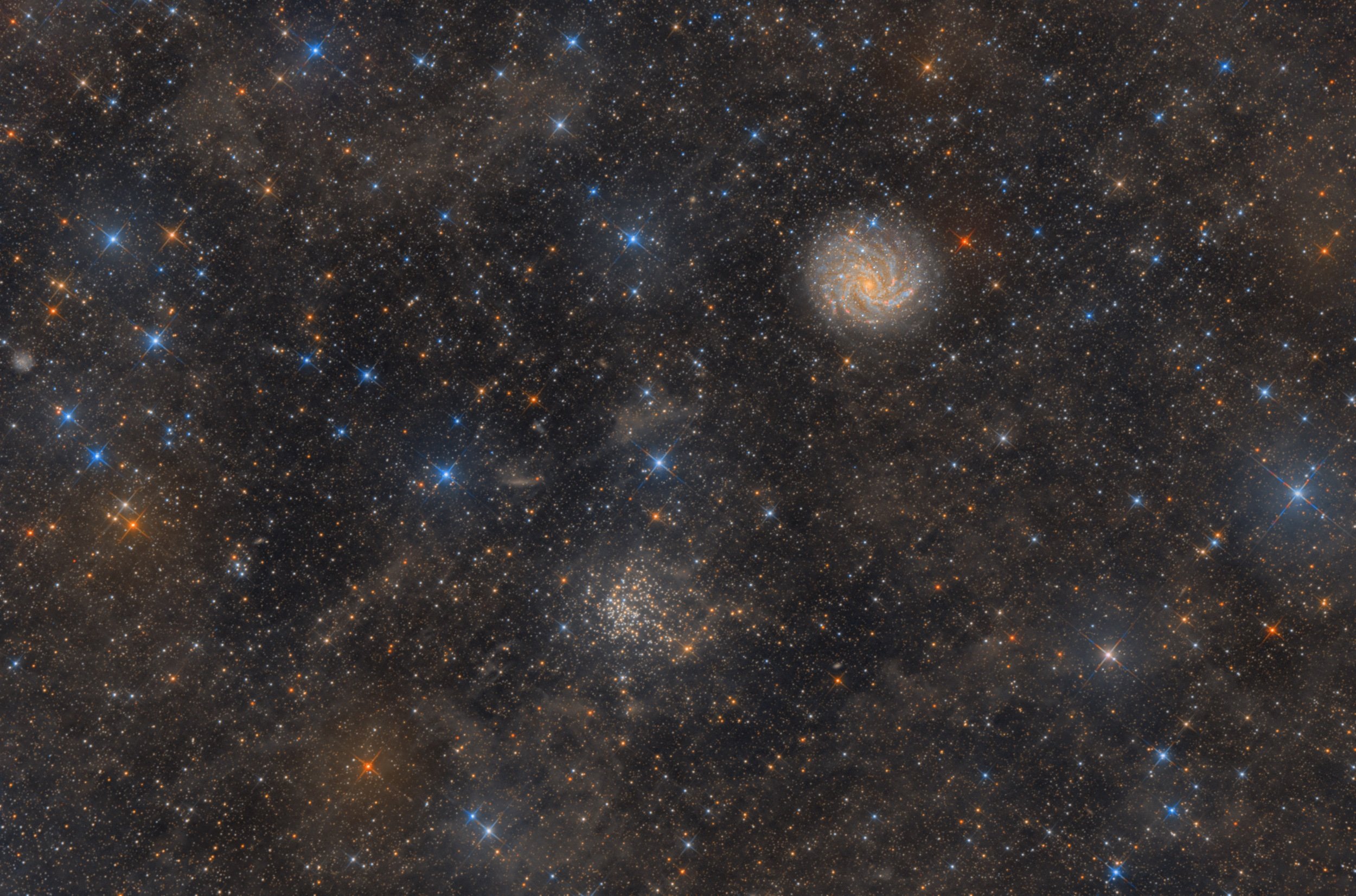
AAPOD2 Image Archives
open cluster
Featured Astrophotographer on AAPOD2
Cassiopeia’s "Open Clusters"
Image Description and Details :
A short trip to Cassiopeia has brought out this impressive star field. It is teeming with star clusters and galactic dust. Since there are delicate foothills of Ha areas in this region, I have decided to collect additional Ha data in addition to the LRGB data.Telescope: Takahashi FSQ-85EDCamera: ZWO ASI2600MM ProMount: Sky-Watcher EQ6-R ProFilters:Baader Blue (B-CCD) 36 mm · Baader Green (G-CCD) 36 mm · Baader H-alpha 6.5nm (CMOS-Optimized) 36 mm · Baader Red (R-CCD) 36 mm · Baader UV/IR Cut / Luminance 36 mmSupport:Takahashi Flattener for FSQ-85EDX (TKA37582)Guiding: Primaluce Lab 60mm Compact Guide scope, ZWO ASI120MM MiniDatum: 25. Oktober 2022 · 26. Oktober 2022 · 27. Oktober 2022 · 29. Oktober 2022 · 4. November 2022
Copyright: Stefan "Harry" Thrun
NGC 6946: The Fireworks Galaxy and its open cluster
Image Description and Details : Rare are the spiral galaxies that we see exactly from the front. The spiral galaxy NGC6946 located in the constellation Cepheus is about 10 million light-years away.
She hides behind the curtain of stars formed by the Milky Way which crosses the constellation of Cepheus. Its orange central bulb is made up of old stars while the blue
young star clusters dominate in the spiral arms. Red reveals the presence of areas where stars are born.
The activity is so inetnse that one calls this galaxy, the galaxy of the fireworks.
When the light from this galaxy began its journey to strike my photographic in May 2022, the human line appeared (Sahelanthropus tchadensis) on Earth.
The galaxy is accompanied by an open cluster NGC6939 located in the lower right. Much closer to us than the galaxy (4000 light years), its age has been revealed between 1.0 and 1.3 billion years!
🔭: ASA Newton 254/950 F3.6
⚙️: Paramount MyT
📷: ZWO ASI2400MC à -10°C + rotateur Artesky
🕶: IDAS LPS-P3
🎯: Skywatcher Evostar72ED + ASI290MM mini
💻: TheSkyX pro, NINA, PHD2, AstroPixel Processor, PixInsight, Photoshop
⏱: 19h50' (119 x 600”)
🌍: Lorraine, France
📆: Over 4 nights : 3 may 2022 · 6 may 2022 · 9 may 2022 · 21 may 2022
Copyright: Thomas LELU



